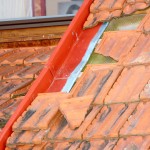Why Roof Flashing is Important for your Home
Roof flashing is an important part of protecting your roof from leakage. It acts as a diverter between roof joints and prevents water from getting under the roof shingles. Living in the Pacific Northwest means dealing with plenty of wet and rainy weather. Unfortunately, there are certain areas of your roof and walls that are prone to leaks and water damage. These include:
Roof Valleys
Skylight Perimeters
Chimneys
Vents
Roof Ridges
Dormer Walls
The basic rule: wherever there is significant water runoff, roof flashing is necessary.
Flashings are usually made of metal and are designed to withstand a variety of weather conditions. Over time, however, the material can show signs of wear and tear. Signs of damage can include:
Rust or corrosion: Galvanized steel metal roof flashing materials can corrode over time as they react with the air, especially if the air is salty. If it becomes rusted or corroded, it won’t repel water and will need to be fixed, either by cleaning, sealing, or completely replacing it. It’s also important to use the right kind of fastener. Galvanized steel nails can corrode copper metal flashing.
Holes: It only takes a small amount of water to cause big damage. Small holes in the roof flashing, either through wildlife or corrosion will require professional sealing or flashing replacement.
Pulling Away: Sometimes the damage can be seen from the ground. This includes when the flashing around a chimney has popped loose from the chimney, forming a funnel of sorts. This gives water a free ride to the attic.
Mold or staining can happen when drip edge flashing is not properly installed. This can produce significant damage to the interior of your home and can cause health problems, too. In addition, if the flashing is not installed correctly, internal leaks can form near windows, skylights, or fireplaces, which could be expensive to repair.
Flashing Installation Process
Experience roofing contractors can spot poorly installed roof flashing a mile away. This is because the same kind of flashing can’t be used for every kind of roof material. Chimney flashing is different than vent flashing, which is different than valley flashing.
Depending on the roofing material, base flashing can be installed a few different ways. For example, when the roof meets the wall of a dormer, underlayment is run up the side of the wall for a few inches. That’s the first level of defense. Then the roof covering is installed.
With composite asphalt shingles, the flashing is installed on top of the shingles, although another layer of shingle tabs may be installed over the top for aesthetic reasons. Then house wrap can be used over the verticle part of the flashing, then the siding.
This creates several layers of protection at the most vulnerable parts of the roof. Counter flashing may be used, too, for extra protection. These are pieces of flashing that are installed vertically over the base flashing but continues a few more inches up the wall.
Our experienced team of roofing professionals at Warner Roofing can inspect your roof to ensure there are no issues with the flashing. You can count on us to spot any damage and get it fixed or replaced. This will give you peace of mind going into the colder, wetter winter months. Contact us today for an appointment!







